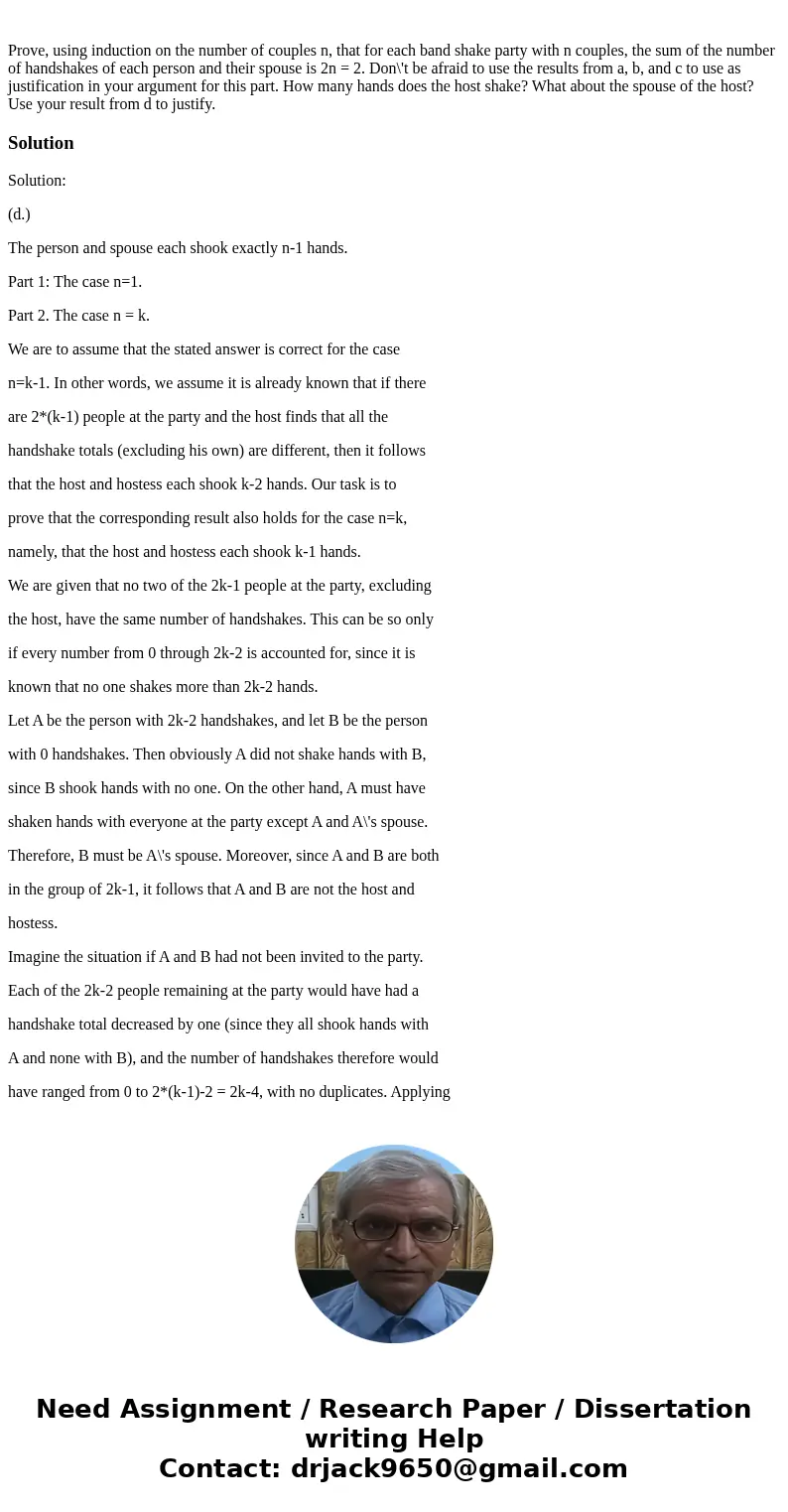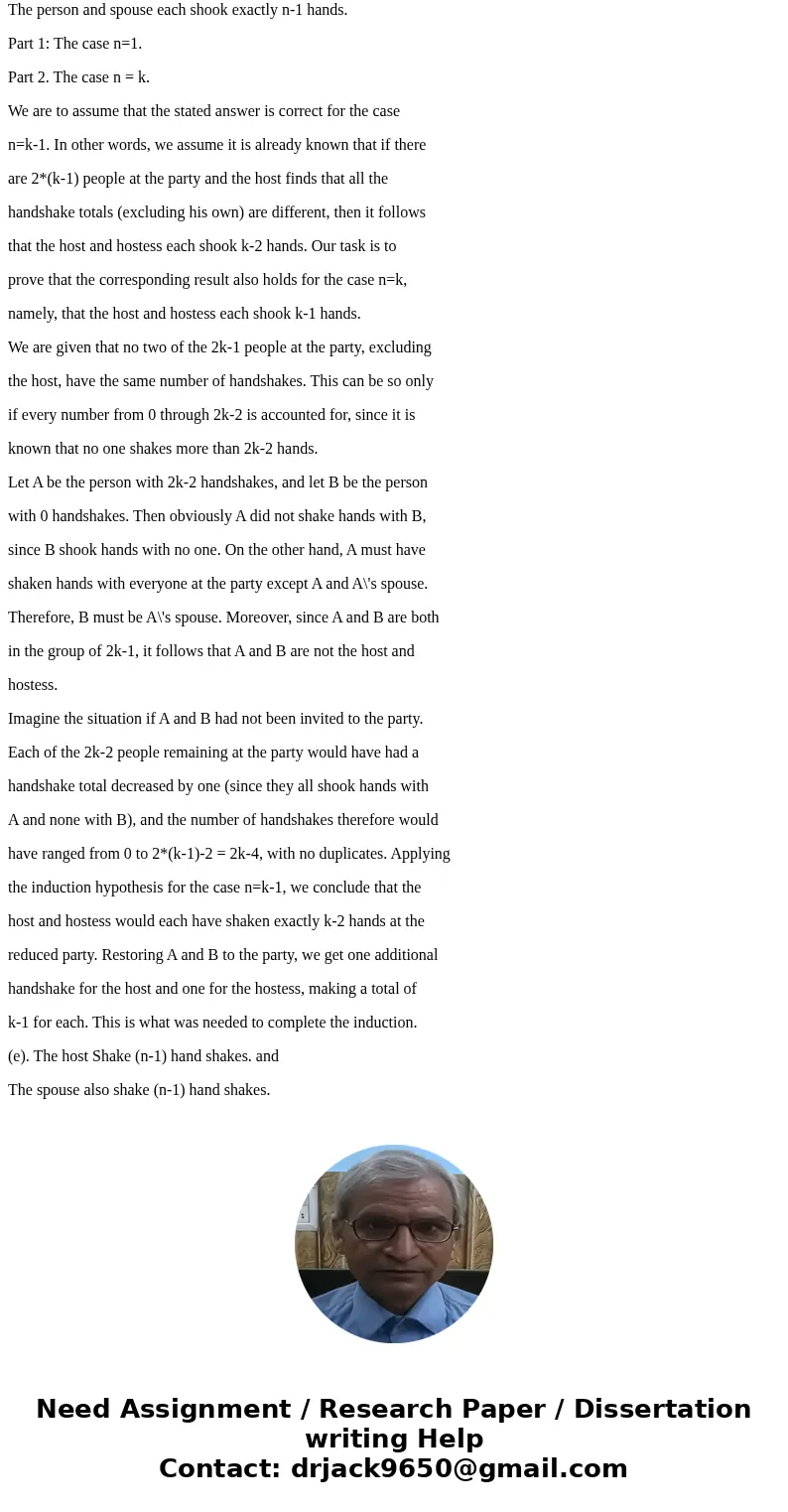Prove using induction on the number of couples n that for ea
Solution
Solution:
(d.)
The person and spouse each shook exactly n-1 hands.
Part 1: The case n=1.
Part 2. The case n = k.
We are to assume that the stated answer is correct for the case
n=k-1. In other words, we assume it is already known that if there
are 2*(k-1) people at the party and the host finds that all the
handshake totals (excluding his own) are different, then it follows
that the host and hostess each shook k-2 hands. Our task is to
prove that the corresponding result also holds for the case n=k,
namely, that the host and hostess each shook k-1 hands.
We are given that no two of the 2k-1 people at the party, excluding
the host, have the same number of handshakes. This can be so only
if every number from 0 through 2k-2 is accounted for, since it is
known that no one shakes more than 2k-2 hands.
Let A be the person with 2k-2 handshakes, and let B be the person
with 0 handshakes. Then obviously A did not shake hands with B,
since B shook hands with no one. On the other hand, A must have
shaken hands with everyone at the party except A and A\'s spouse.
Therefore, B must be A\'s spouse. Moreover, since A and B are both
in the group of 2k-1, it follows that A and B are not the host and
hostess.
Imagine the situation if A and B had not been invited to the party.
Each of the 2k-2 people remaining at the party would have had a
handshake total decreased by one (since they all shook hands with
A and none with B), and the number of handshakes therefore would
have ranged from 0 to 2*(k-1)-2 = 2k-4, with no duplicates. Applying
the induction hypothesis for the case n=k-1, we conclude that the
host and hostess would each have shaken exactly k-2 hands at the
reduced party. Restoring A and B to the party, we get one additional
handshake for the host and one for the hostess, making a total of
k-1 for each. This is what was needed to complete the induction.
(e). The host Shake (n-1) hand shakes. and
The spouse also shake (n-1) hand shakes.


 Homework Sourse
Homework Sourse